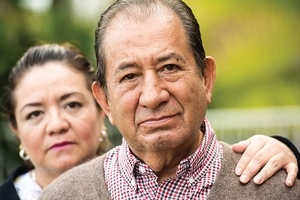Research
Who Is Taking Care of the Caregivers? $1.8 million grant to incorporate caregivers into economic policymaking

On any given day, hundreds of millions of people across the world are taking care of young children, the elderly, the sick, and the disabled.
These caretakers are parents, adult children, distant relatives, volunteers, and professionals. The majority of them are women, and many work for little or no pay. Most lack health insurance and other benefits. Their work is largely unrecognized by the macroeconomic models that dictate economic policies across the world—policies that affect their health, employment, benefits, and more.
Now a team of researchers at American University is trying to change all of this.
Thanks to a new three-year, $1.8 million grant from the William and Flora Hewlett Foundation, American University is leading a group of scholars from multiple disciplines to research caregivers and shed light on their work. Their goal is to eventually incorporate caregivers into macroeconomic models used for assessing policy impact on employment, gender inequality, and growth.
Caregiving and Gender
The project's principal investigator is AU's Professor of Economics Maria Floro, the co-director of the university's graduate Program on Gender Analysis in Economics (PGAE). Floro has dedicated her academic career to researching the unpaid work of women, and she points out that women still shoulder the major burden of care in the United States and across the world. In fact, according to the Institute on Aging, more than 75 percent of caregivers in the United States are women—and this percentage is even higher in other countries.
Floro believes that bringing the caregiver economy out into the open is absolutely critical to economic growth and gender equality across the world. "For 28 years I have promoted the collection and analysis of data on the unpaid work of women," she says. "There has been recognition of it, but it has been unaddressed by policymakers who develop and implement government budgets, taxation, trade, employment, and social policies."
The Work
The project is officially titled The Care Economy and Gender-Sensitive Macroeconomic Modelling for Policy Analysis. It will use the nation of South Korea as its case study, and it will be performed by three groups of scholars. The first will produce theoretical macroeconomic models.
The second group will research the care economy in South Korea to identify different types of caregivers and their work. This is not an easy task because so much is unpaid and hidden, but researchers will use surveys and in-depth interviews of households, local government and community leaders, and employers.
The third group will use these results to produce macroeconomic models of the South Korean caregiver economy in the hope that they will eventually become part of policy toolkits.
The Importance
"The visibility of unpaid and paid care work is vital to enhancing policymakers' recognition and understanding of women's economic contributions and the essential role of care in our lives and the economy," says Floro.
But she adds that the ultimate goal is to improve the quality of life for everyone: men, women, caretakers, and all people who require care. "The aim of this project is to shift the distribution of care provisioning towards a more equal work burden between men and women and towards increased public investment in care provisioning for children, the sick, the disabled, and the elderly."
